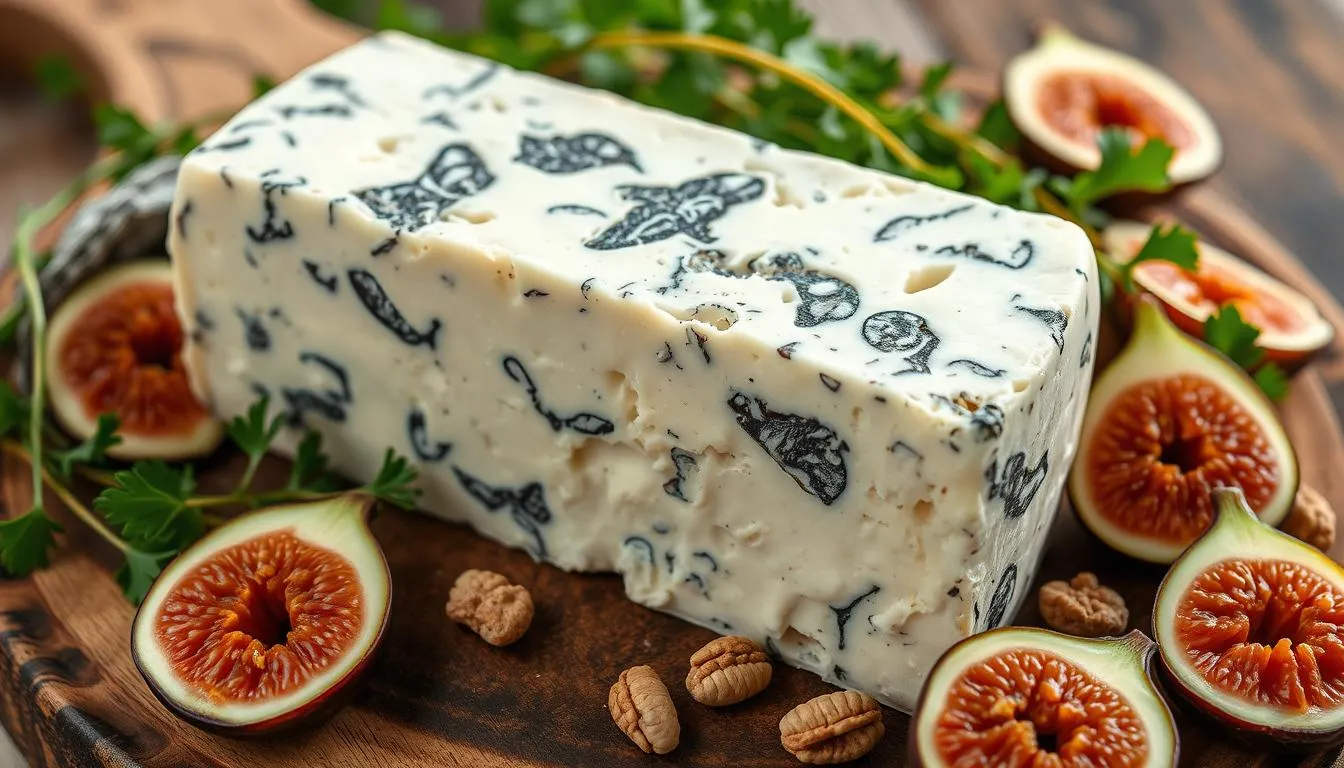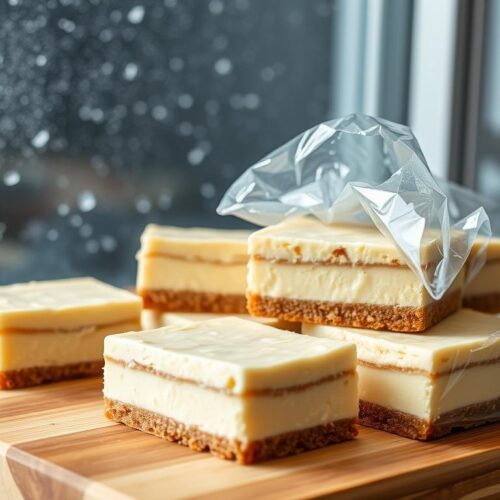Cheese lovers often look for alternatives to blue cheese’s strong taste. Mexico’s cheese scene offers many cheeses that are similar to blue cheese. We’ll look into which Mexican cheeses can be great substitutes or pair well with blue cheese.
Mexico’s cheese heritage is rich and varied, from highlands to coast. Some Mexican cheeses are similar to blue cheese, even though they’re made differently. These cheeses have bold, tangy flavors and sometimes a moldy taste, perfect for blue cheese fans.
Mexican Cheese and Blue Cheese: A Flavorful Comparison
Mexican cheese and blue cheese may seem very different, but they share interesting similarities. Looking into their origins, how they’re made, and their unique tastes can give us a better understanding of what makes them special.
Exploring the Similarities and Differences
Both Mexican cheese and blue cheese are known for their strong, complex flavors. But how they get these flavors is quite different. Mexican cheese is creamy and slightly tangy, while blue cheese has a strong, earthy taste with blue-green veins.
Even though they taste different, they’re made in similar ways. Both use special mold cultures to create their unique flavors. This careful process is what makes each cheese special in its own way.
| Characteristic | Mexican Cheese | Blue Cheese |
|---|---|---|
| Flavor Profile | Creamy, slightly tangy | Pungent, earthy, with blue-green veining |
| Production Method | Specific mold cultures introduced to impart unique flavors | Specific mold cultures introduced to impart unique flavors |
| Texture | Creamy, slightly firm | Crumbly, veined |
The flavor profiles of Mexican cheese and blue cheese are different, but their production is what brings them together. By knowing their similarities and differences in texture and flavor, we can see what makes each cheese unique.

Mexican Cheese is Similar to Blue Cheese
Mexican cheese and blue cheese have interesting similarities in their origins and making. These similarities highlight the tasty links between these two cheeses. Learning about their history and making process helps us value their special qualities.
Understanding the Origins and Production Methods
Mexican cheese comes from a rich cultural background. It started with the dairy traditions of Spain and the Iberian Peninsula. The Spanish conquistadors brought cheesemaking knowledge to Mexico, which local artisans then improved upon.
Like blue cheese in Europe, Mexican cheese uses special mold cultures. These molds, like Penicillium roqueforti, are key in creating the cheese’s flavors and textures. The aging process, in cool, humid places, also adds to these unique traits.
- The origins of Mexican cheese can be traced back to the dairy traditions of Spain and the Iberian Peninsula.
- The production of Mexican cheese often involves the introduction of specific mold cultures, similar to the process of making blue cheese.
- The aging process, often in cool, humid environments, is crucial in developing the distinctive flavors and textures of Mexican cheese.

By learning about the shared beginnings and making of Mexican cheese and blue cheese, we see their unique appeal. These cheeses are fascinating and worth exploring.
Popular Mexican Blue Cheese Varieties
Mexican cheese may not be as famous for its blue cheese-like types. Yet, there are several popular ones that closely match the taste and texture of traditional blue cheese. These types of mexican blue cheese, or mexican queso azul and mexican queso añejo, bring a unique twist to the classic cheese. They are perfect for cheese lovers to try.
Queso Añejo is a well-known Mexican blue cheese. It looks and tastes like Roquefort or Gorgonzola, with a blue-green mold and a strong flavor. Queso Añejo is great in traditional Mexican dishes, adding a rich flavor to sauces and toppings.
Queso Fresco Azul is another favorite Mexican blue cheese. It’s a soft, fresh cheese with a mild blue cheese taste. It’s not as strong as Queso Añejo, but still offers a unique twist, making it great for many Mexican dishes.
| Cheese Variety | Flavor Profile | Texture | Culinary Uses |
|---|---|---|---|
| Queso Añejo | Bold, pungent, blue cheese-like | Hard, aged | Sauces, toppings, traditional Mexican dishes |
| Queso Fresco Azul | Mild blue cheese-like taste | Fresh, soft | Versatile ingredient in Mexican cuisine |
If you love bold blue cheeses or prefer something milder, Mexican blue cheese varieties are worth trying. They add a unique flavor to dishes, from tacos to sauces. These mexican queso azul and mexican queso añejo options will surely impress your taste buds and add a Mexican touch to your cooking.
Tasting Notes: Flavor Profiles and Textures
Savoring the Rich and Pungent Flavors
Exploring Mexican cheese varieties similar to blue cheese is key. You’ll find everything from creamy Oaxaca to bold Cotija. These cheeses offer a wide range of tastes for those who love to try new things.
The flavors of these cheeses are sharp, salty, and tangy. This makes them stand out from European cheeses. You can enjoy them in different textures, from smooth Oaxaca to crumbly Cotija.
These cheeses pair well with many foods. Try them with bread, on tacos, or on their own. The rich flavors and varied textures will surely impress you. Discover the joy of Mexican blue cheese-like cheeses for yourself.
FAQ
What is the origin of Mexican cheese similar to blue cheese?
Mexican cheese that looks like blue cheese comes from old cheesemaking ways in Mexico. These cheeses are shaped by the local culture and food traditions.
How is Mexican blue cheese-style cheese produced?
Making Mexican cheese like blue cheese involves aging, adding mold, and fermentation control. These steps create the unique tastes and textures of blue cheese.
What are the most popular Mexican blue cheese-style varieties?
Queso Añejo, Queso Azul, and Queso Oaxaca are top Mexican cheeses like blue cheese. They have different tastes and textures that blue cheese fans enjoy.
How do the flavors and textures of Mexican blue cheese-style cheeses compare to traditional blue cheese?
Mexican cheeses like blue cheese have deep, strong flavors. They taste earthy, salty, and sometimes tangy. Their textures vary from creamy to crumbly, depending on the cheese type.
Where can I find Mexican blue cheese-style cheeses?
You can find these cheeses in specialty shops, Latin American stores, and some big supermarkets. They’re also online or from Mexican cheese makers.





